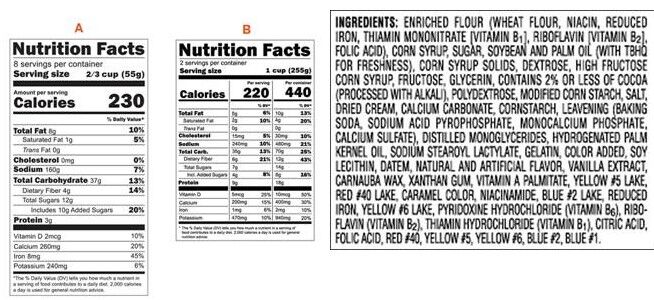We all want to stay healthy. With all the catastrophic occurrences going on, we all need to stay healthy. Whether it’s to lose weight, or just to sustain yourself through these events, Staying healthy is not a luxury, it is a necessity.
The first part of being and staying healthy is to eat healthily. This is not as easy as it sounds. There are many things to take into consideration when adopting a healthy eating lifestyle. Some people may require #healthydietadvice to develop a healthy eating lifestyle, others may be able to do it on their own, but we all need to start eating healthy.
The first part of eating healthy is to understand the foods you are consuming. This is done by reading labels. Understanding what’s in the foods you buy is key to stocking a nutritious kitchen. Yet food labels are not always easy to decipher. What exactly are you getting when you buy “juice,” a “multigrain” bread, or a “low-fat food”?
We all have a right to know what’s in our food, how it’s produced, and where it’s from. But food companies are often not required to give us the information we want to know. The current rules on food labeling leave a lot of room for vague claims that make it difficult to differentiate between food produced by sustainable farmers using humane practices, and food manufacturers greenwashing their products.
All packaged foods come with a nutrition label meant to provide you with the information necessary to know exactly what you’re eating. Understanding what’s in the foods you eat helps you make healthier choices. Checking food labels also makes it easy for you to compare the nutrient content of different options.
A healthy diet is crucial throughout your lifetime and paying attention to nutrition labels is a good step toward improving your overall diet. Also reading the ingredients is critical to understanding what you are eating. Whether you are trying to stay healthy or lose weight, the nutrient content and ingredients are critical.
Benefits of Reading Food Labels

Being able to read and understand food labels will:
- Provide Key Information: The nutrition label provides key information such as serving size, calories, total fat, saturated fat, cholesterol, protein, carbohydrate, and vitamin content.
The label also contains a list of the ingredients. This information helps you stay on track with your daily targets. It also helps you avoid certain ingredients if you have a food intolerance or are following a diet that excludes certain components, such as dairy.
- Helps You Cut Back: Typically, Americans consume too much salt, saturated fat, and added sugar. Checking nutrition labels so that you know what and how much you’re eating plays a central role in being able to cut back on your intake.
It’s recommended that you cut back your sodium intake to less than 2 grams (2000mg) per day and your intake of added sugar and saturated fat to no more than 5 to 15 percent of your daily calories, that equals about 60grams of a 1200 calorie diet
Check food labels for guidance as to how to reach your goal of cutting back on these components.
- Helps You Improve Your Diet: Despite the wide variety of available nutritious foods, many Americans fail to eat recommended amounts of key nutrients.
For example, it’s recommended that you increase your intake of dietary fiber. Aim to get 25 grams of fiber if you’re female and 38 grams if you’re male, according to the Dietary Guidelines for Americans. Checking food labels for the fiber content plays a role in helping you increase your intake. For instance, not all brown bread contains rich amounts of fiber, and some manufacturers use coloring to make bread look healthier, so it’s crucial to read the label.
How to Read Food Labels

The secret to reading a food label is in knowing what to look for. If you understand the label terminology, it’s not so difficult to make the healthiest purchases.
The Essential Information
The most important and reliable information on the label can be found on the nutrition facts panel and the ingredient listing.
Here is the information that’s most essential:
- Calories. Despite all the talk about carbs and fat, calories are what counts for weight control. So the first thing to look for on a label is the number of calories per serving.
The FDA now makes calorie information easier to find by making it larger and bolder.
- Serving size and number of servings per container. This information is critical to understanding everything else on the label.
Some manufacturers take what is considered a single-serve container and call it two servings, hoping the numbers on the label will look better to consumers.
- Dietary Fiber: To be considered high in fiber, a food must contain at least 5 grams per serving. Fruits, vegetables, and whole grains are high in fiber.
It is recommended you have at least 25 grams of fiber daily.
- Fat. Fat has more calories per gram than carbs or protein, and all fats have 9 calories/gram.
Choose unsaturated fats whenever possible, and limit foods with saturated and trans fats (also called trans fatty acids).
Manufacturers are required to list the amount of trans fat per serving. Look for terms such as “partially hydrogenated” or “hydrogenated,” which indicate the product contains trans fats.
- Sodium per serving. Sodium should be restricted to 2 grams per day (that’s less than 1 teaspoon of salt) for healthy adults, and 1.5 grams for those with health problems or family histories of high blood pressure.
To reduce your sodium intake, choose less processed foods.
- Sugar. Sugar adds significant calories and is often listed under hidden terms, like “high fructose corn syrup,” “dextrose,” “invert sugar,” “turbinado,” etc.
Choose foods with less than 5 grams per serving to help control calories.
- % Daily Value (% DV). Reflects the percentage of a certain nutrient that the food supplies, based on a 2,000 calorie diet. It gives you a rough idea of the food’s nutrient contribution to your diet.
- Ingredient List. Manufacturers are required to list all of the ingredients contained in the product by weight.
A jar of tomato sauce with tomatoes as the first ingredient lets you know that tomatoes are the main ingredient. The spice or herb listed last contains the least amount. This information is critical for anyone who has allergies, and for prudent shoppers who want, say, more tomatoes than water, or whole grain as the leading ingredient.
Keep in mind. the longer the ingredient list, the more processed a food is. If most of the ingredients are hard-to-pronounce chemicals instead of actual food, it’s a safe bet that food is heavily processed and should be avoided
For #weightlosssupport or #healthydietadvice visit #dietritesystem

